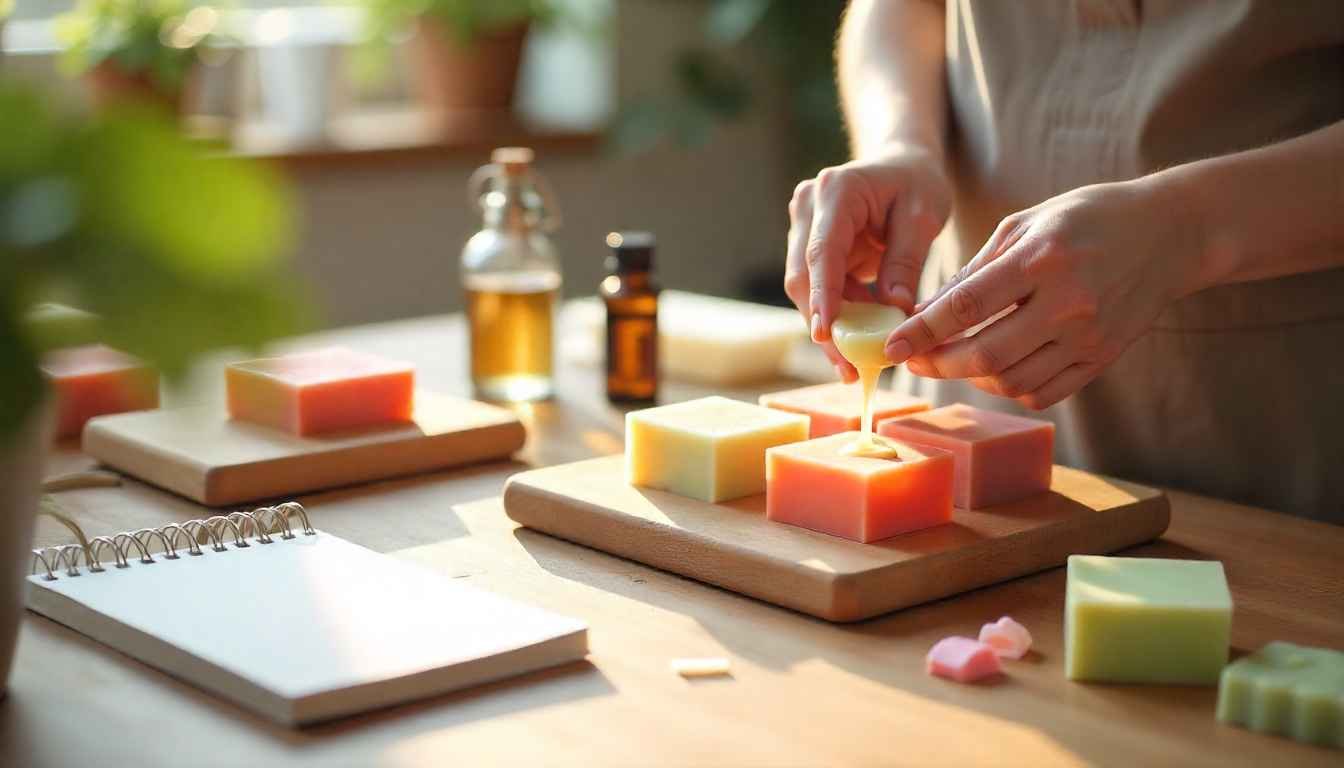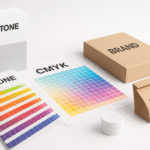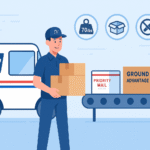How Beginners Can Start a Successful Melt & Pour Soap Business in US

Do you want to run a home-based business but are a little troubled about the complex chemistry of soap making? But how would you feel if we told you that entering the handmade soap business is not that difficult? Will you take up a chance in converting your hobby into a business that will generate profit? If yes, then for beginners, melt and pour soap is a good place to start. This product-based business is easily capitalized because it utilizes ready-made soup bases. This is why it can be very popular with entrepreneurs.
Read this blog if you want to launch your melt and pour soap business in the US. We will walk you through essential steps such as from product manufacturing to effective marketing to ensure your business starts successful and stays successful.
What do you need to start a melt and pour soap business?
In melt and pour soap making you don’t have to start from the scratch. You just simply have to melt the premade base. Once it turns into a liquid, then you can customize it with your unique scents, colors, additives, and pour it into the mold of your desired shape. Once you learn the process. Adding intricate layers and swirls to your soap is a no-brainer. Here is a list of the ingredients needed for these homemade melt and pour soaps.
Melt and pour soap base
It is a main component used in soap making. It comes in a variety of options. Such as glycerin, shea butter, goat milk, and oatmeal. Each foundation has unique advantages; so pick the one that is most suitable for you. For example a glycerin base provides excellent lather and clarity for layering. Whereas a goat milk base holds moisturizing properties.
Mold
Molds are used for pouring melted base and to create a desired soap shape. The option is to use sturdy plastic or food-grade silicon mold. As they are heat-resistant, durable, and support easy unmolding.
Essential oils
To infuse a lovely aroma into your soaps, add essential oils or fragrance oils. However, be careful of the oil quantity. A general usage rate is about 0.3 oz. of scent per pound of soap.
Colorants
Colorants are mineral powder used to add color to melt and pour soaps. The most common colorants are micas and color blocks. Before adding colorant to a base make sure it is “skin-safe” and it won’t bleed or fade in a soap.
91% Isopropyl Alcohol Spray
The whole soap making process is incomplete without this process. This spray is a layering adhesive that prevents air pockets.
Take note, this is the most important part. Buy your ingredients (base, essential oils, colorants, and packaging materials) in large volume. Bulk purchasing offers a lower per-unit cost. This will increase your gross profit on every bar sold.
Pricing handmade melt and pour soaps for maximum profits
Most soap makers focus on the melt and pouring part. They often overlook the accurate product pricing and profit. If you are setting prices based on what your competitors charge. Or simply doubling your ingredient cost. Then you’re selling your unique designs and hard work short. Your pricing strategy must support both wholesale and retail channels. This will allow you to maximize profit and provide good margin to retailers, too.
However, successful pricing depends on integrating all costs, beyond just the raw materials. Thus, the true cost of the goods sold (COGS) includes the cost of materials, packaging, labor, and overhead expenses. Use the following formula to easily determine the ideal price.
- COGS per bar = Materials + Packaging + Labor + Overhead expenses
- Price = COGS x 3 or 4
- For Wholesale price = COGS x 2 or 2.5
- For Retail Price = Wholesale price x 2
If your retail price will be low. The customers will perceive your soaps as of poor quality. Thus, you can lose your profit. Whereas setting a premium price point means making your product out of customers reach. Therefore, aim for a sweet spot that covers your true COGS and deliver a healthy profit margin.
Marketing handmade soaps to increase product visibility
The handmade soap market is competitive. Having moisturizing bars with stunning swirls and scent isn’t enough to secure sales. You need to make your soaps visible. And visibility is not luck. It’s a strategy. Therefore, avoid using generic wrapping for your meticulously crafted soaps. As it is the enemy of visibility. Go for custom soap printed boxes. It’s a packaging designed for the digital age. These boxes speak volumes on a retail shelf and shine in product photography, thus making the soaps go viral on e-platforms. Curious about how this packaging makes soap stand out? Let’s explore:
Instantly grab consumer attention
The moment a potential buyer sees your item is the moment the sale is won or lost. Custom soap boxes can be customized into unique structures with innovative features. Like a die-cut window that gives a detailed tour of meticulous craftsmanship of a soap. You can also integrate handles and ribbon to present the soap as a gift-ready item. Such luxurious packaging turns a moment of interaction into a convincing moment of impulsive purchase.
Improve brand recall
Unlike traditional advertising that is ephemeral, custom retail boxes wholesale are designed with enticing color schemes, logos, and intricate artwork. And can be further upgraded with product information to communicate unique selling points (USP). Such as soap labels & melting point, ingredient list, net weight, or scent details. This clear information will build confidence in the brand, foster customer loyalty, and boost sales.
The “Unboxing” Phenomenon
In today’s digital age, the balance of power in marketing has changed. Now-a-days, consumers now play a pivotal role in shaping brand narratives through their own content creation. Customizing your soap boxes with die-cut inserts, branded tissue paper, magnetic closures, and ribbon pull can elevate unboxing into an experience. Which consumers love to share on their social media accounts. Thus, you get to promote your product at free of cost.
Legal and safety compliance for melt and pour soap business in the USA
When you sell a skincare product like soap, you are directly accepting risk. Especially in a country like the USA. Here the line between a profitable product and a catastrophic lawsuit is dangerously thin, which is often defined by a single label claim or a missing permit. Therefore, before starting a soap business you need to get a general business license from your city or county. Additionally, soaps are taxable goods. And for taxable goods a state’s sales tax permit is mandatory. Even if you run an online business.
Due to the use of melt and pour base, soaps often fall under the category of cosmetic items. That’s why in soap packaging compliance to FDA regulations is mandatory. The packaging must be designed with proper labeling that includes:
- Product name
- Net weight
- Business name and address
- Ingredient list
- Direction for use
- Batch or lot number
- Warnings
- Expiry date
So don’t let a $15 bar of soap become a six-figure legal nightmare. Start your business according to the rules and regulations of your state.
Conclusion
If you want to enter into the melt and pour soap business. Then, start small, stay compliant, and never stop refining your product and brand messaging. For increased market visibility invest in custom soap packaging boxes. You can get these compliant boxes from us. We support endless customization and allow our clients to lead. Order today! Boxit Packages is waiting for your unique vision.



.jpg)